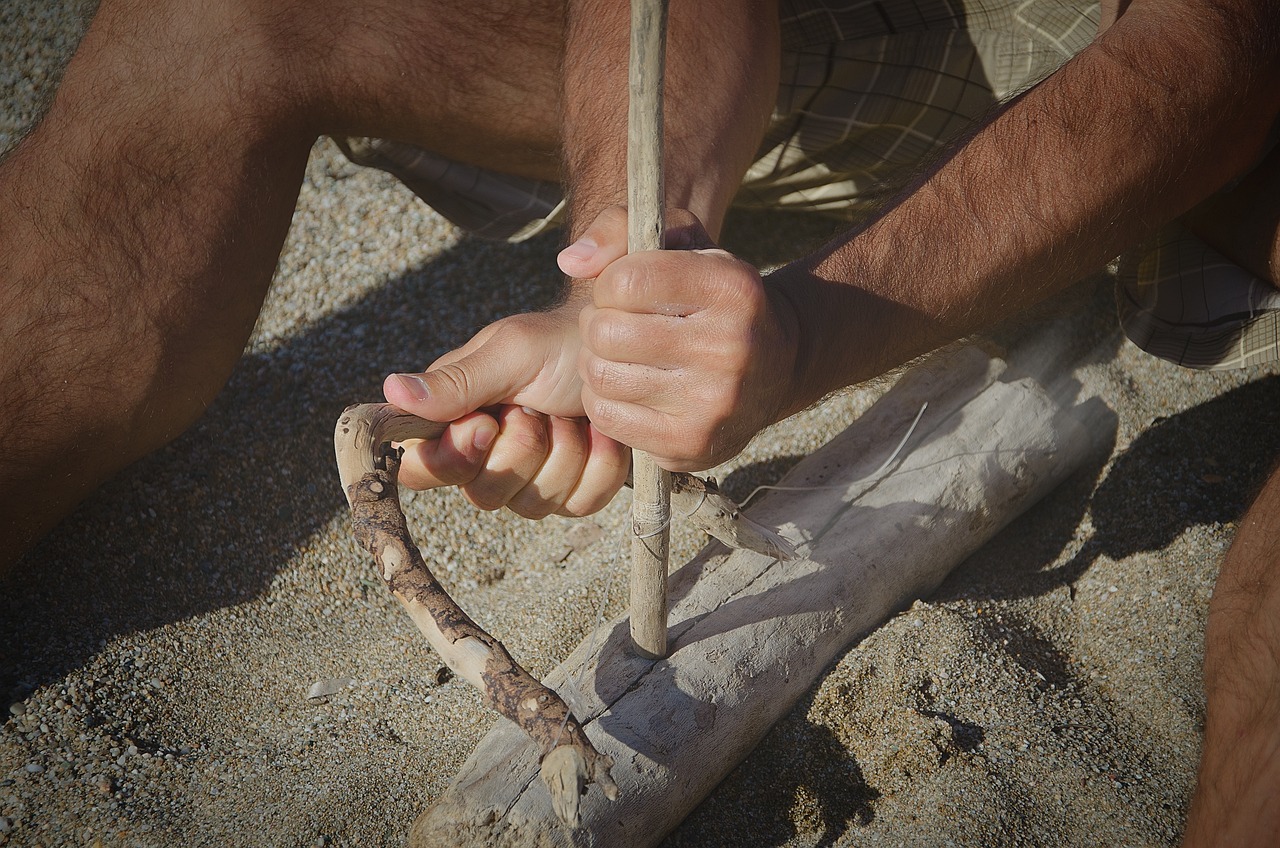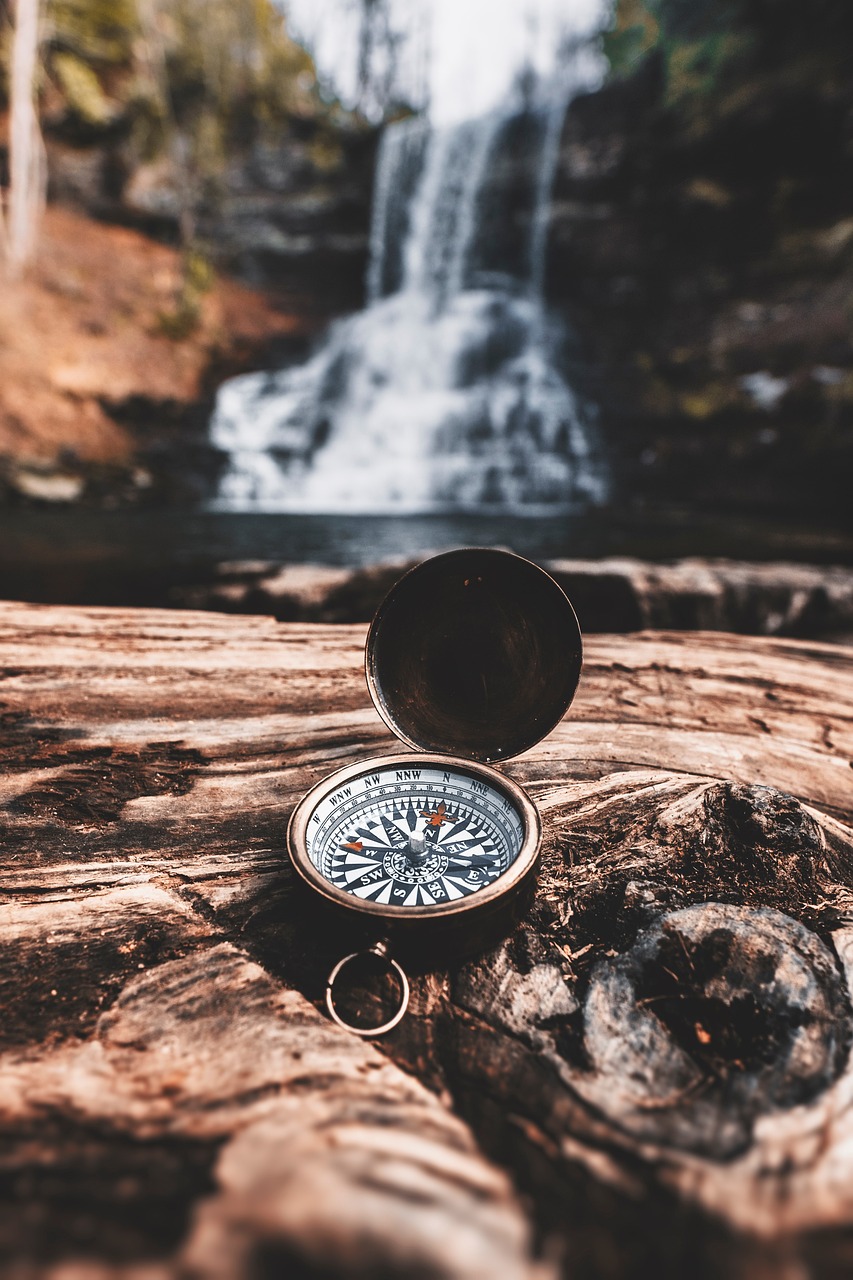Imagine you’re out exploring the breathtaking beauty of the wild, but suddenly find yourself in a precarious situation. What would you do? Fear not, adventurer! In this article, we’ll uncover some of the most popular self-rescue techniques that can come to your aid when facing danger or adversity in the wild. From building emergency shelters to navigating treacherous terrains, these techniques will equip you with the knowledge and skills needed to stay safe and secure in nature’s unpredictable embrace. Get ready to embark on a journey of self-reliance and empowering survival strategies!

Building Shelter
Having a solid shelter is crucial for survival in the wild. It provides protection from the elements and helps maintain body temperature. There are several methods you can use to build a shelter, depending on the available resources and your situation.
Creating a Basic Shelter
When constructing a basic shelter in the wild, the key is to find a location with natural features that can be used as a foundation. Look for sturdy trees, rock formations, or even a cave. Utilize branches, foliage, and other materials to create a barrier and provide overhead cover. This will protect you from rain, wind, and wildlife, ensuring a more comfortable and secure environment.
Constructing a Lean-to Shelter
A lean-to shelter is a simple yet effective way to protect yourself from the elements. Find a fallen tree or a large rock to serve as the backbone of your shelter. Prop up long branches against the support, creating an inclined roof. Layer smaller branches, leaves, and debris on top to provide insulation. This type of shelter is quick to build and offers decent protection from rain or snow.
Building a Debris Hut
In colder environments, a debris hut can provide much-needed warmth. Start by creating a frame using sturdy branches. Then, pile leaves, moss, grass, and other natural materials onto the frame, forming a thick insulation layer. Ensure the entrance is protected from wind and rain. The debris hut traps warmth inside and acts as a barrier against the cold. It requires more effort to construct but offers excellent thermal insulation.
Finding or Purifying Water
Water is crucial for survival, so it’s essential to know how to find or purify it in the wild. Without access to clean water, dehydration can quickly become a threat to your well-being.
Locating a Water Source
The first step in obtaining water is to locate a water source. Look for signs such as vegetation, animal tracks, or water-loving plants. Follow downhill streams or rivers, as water naturally flows in these areas. Beware of stagnant water, as it may carry harmful bacteria and parasites. If no water source is nearby, you can try digging a hole in the ground near vegetation, as it may lead to a hidden water source.
Boiling Water
Boiling water is an effective method for purifying it, as the high temperature kills most bacteria and parasites. Collect water from a safe source and place it in a container. Set up a fire and bring the water to a rolling boil for at least one minute. Allow it to cool before consuming. Boiling water is a reliable way to ensure it is safe to drink.
Using a Water Filter
If boiling water is not an option, using a water filter can be a lifesaver. Portable water filters are designed to remove bacteria, parasites, and other contaminants, providing you with safe drinking water. Fill a container with water and pass it through the filter, following the manufacturer’s instructions. This method ensures clean drinking water without the need for fire or boiling.

Starting a Fire
Fire is essential for warmth, cooking, and signaling for help. Knowing different methods to start a fire in the wild is crucial for survival.
Using a Fire Starter
A fire starter, such as a lighter or matches, is the easiest and most convenient way to start a fire. Ensure you have a waterproof container to store them. To start a fire, gather small, dry sticks and leaves as tinder. Create a small pile of tinder, then ignite it using the fire starter. Gradually add more fuel, such as larger sticks and branches, to sustain the fire.
Creating a Bow Drill
When lacking a fire starter, a bow drill can be an effective method for starting a fire. It requires a bow, a spindle, a fireboard, and a handhold. Carve a notch into the fireboard and place it on a flat surface. Insert the spindle into the fireboard and the handhold on top of the spindle. Place the bowstring around the spindle and move the bow back and forth, causing the spindle to rotate rapidly. This friction creates heat and eventually ignites the tinder.
Making a Fire Plough
Another primitive fire-starting technique is the fire plough. Choose a soft, dry wood for the plough and a slightly harder wood for the baseboard. Carve a groove into the baseboard and rub the tip of the plough back and forth in the groove. The friction generates heat, creating an ember. Transfer the ember to a pile of tinder, blow gently to nurture the flame, and add more fuel to sustain the fire.
Signaling for Help
If stranded in the wilderness, it’s vital to attract attention and increase your chances of being rescued. Signaling for help can be a lifesaver when all other options seem bleak.
Using a Whistle
A whistle is a small yet powerful signaling device that can be heard over long distances. Carry a whistle at all times and use it to produce a series of three short blasts. This signal is universally recognized as a call for help. Repeat the pattern at regular intervals, pausing to listen for any response. The sound carries farther than the human voice and can draw attention from potential rescuers.
Creating a Signal Fire
Building a signal fire is an effective way to attract attention during the day or at night. Select a location with a clear line of sight from above, such as an open area. Gather dry wood, branches, and leaves in a well-ventilated pile. When ready, ignite the fire and create thick smoke by adding green vegetation. The contrast between the smoke and the natural surroundings makes the signal visible from a distance. Maintain the fire and be prepared to attract attention by waving any reflective objects.
Using a Mirror or Reflective Surface
If you have a mirror or any reflective surface, it can serve as a signaling tool. Hold the mirror in your hand, facing the sun, and position it to reflect the light towards the intended direction. Move the mirror systematically, angling the reflection to different locations, and scan the horizon for potential rescuers. The glint of reflected light can catch the attention of search parties or passing aircraft.

Navigation Techniques
Being able to navigate accurately is essential when trying to find your way in the wild. These techniques will help you avoid getting lost and increase your chances of reaching safety.
Using a Compass
A compass is a vital tool for navigation. It consists of a magnetic needle that aligns with the Earth’s magnetic field. To use a compass, hold it flat in your hand, keeping it level and away from any metal objects. Rotate your body until the needle points to the “N” (north) on the dial. Orient yourself according to the cardinal directions (north, south, east, west), and use the compass as a guide to navigate towards your destination.
Reading Topographic Maps
Topographic maps provide detailed information about the terrain, elevation, and landmarks. Learning how to read these maps will help you understand your surroundings and plan your route effectively. Familiarize yourself with the map’s legend, which explains the symbols used to represent different features. Pay attention to contour lines, which indicate changes in elevation. By studying these maps and comparing them to the landscape around you, you can navigate accurately and make informed decisions.
Observing the Stars
In certain situations where a compass or map may not be available, observing the stars can serve as a natural navigation method. The North Star, or Polaris, is a reliable reference point in the Northern Hemisphere. Locate the Big Dipper constellation, then draw an imaginary line connecting the two outer stars of the Dipper’s bowl. Extend this line approximately five times its length to find the North Star. By identifying cardinal directions based on the North Star’s position, you can navigate and orient yourself during the night.
Finding Food
In a survival situation, finding food is essential for maintaining energy and strength. While foraging for food in the wild can be challenging, knowing some basic techniques can increase your chances of finding nourishment.
Identifying Edible Plants
Before consuming any wild plants, it’s crucial to have reliable knowledge of edible vegetation. Familiarize yourself with local plants, learn to distinguish edible species from poisonous ones, and understand any preparation or cooking methods required. Look for common edible plants, such as dandelion greens, wild berries, or cattail shoots, as they can provide valuable nutrients to sustain you in the wild.
Trapping Animals
If you have the skills and resources, trapping animals can provide a reliable source of food. Study different trapping techniques suitable for your environment, such as deadfall traps, snare traps, or fishing traps. Construct these traps using available materials, bait them appropriately, and place them strategically in areas frequented by animals. Regularly check the traps for any successful catches, ensuring a supply of protein to meet your nutritional needs.
Fishing Techniques
Fishing is an age-old method of procuring food, and mastering basic fishing techniques can be a game-changer in survival situations. Learn how to create different types of fishing lines, hooks, and nets using material available in your surroundings. Explore various methods, such as handline fishing, spearfishing, or setting up improvised fish traps. Focus on areas likely to have fish, such as rivers, streams, or freshwater ponds. Patience and persistence can lead to a successful catch, providing valuable nourishment.

Handling Medical Emergencies
In a survival scenario, injuries or illnesses can occur, and knowing how to administer basic first aid can make a significant difference in your well-being.
Administering First Aid
Basic first aid skills are essential for treating injuries and preventing further complications. Learn how to clean wounds, control bleeding, and dress injuries properly. Understand the principles of CPR (cardiopulmonary resuscitation) and rescue breathing in case of emergencies. Carry a compact first aid kit with essential supplies, including bandages, antiseptic ointment, pain relievers, and adhesive tape. Being prepared and knowledgeable about first aid can help you handle medical emergencies effectively.
Creating Bandages
When faced with an injury, creating makeshift bandages can help protect wounds from infection and facilitate healing. Use available materials such as clean cloth, clothing, or even large leaves to create bandages. Cleanse the wound thoroughly and cover it with the bandage, ensuring it is secured tightly but not cutting off circulation. Change the bandage regularly and monitor for signs of infection.
Dealing with Common Injuries
Being in the wild increases the chances of encountering common injuries such as sprains, fractures, or burns. Educate yourself on the proper ways to immobilize a sprained joint or treat a fractured bone by creating a splint. Learn how to cool a burn by running cold water over it or applying a cool compress. Knowing how to handle these injuries can reduce pain, prevent further complications, and expedite the healing process.
Self-Defense Strategies
Encountering dangerous wildlife is a possibility when in the wild. Understanding how to identify potential threats and implement self-defense strategies can help you avoid confrontations and protect yourself if necessary.
Identifying Dangerous Wildlife
Familiarize yourself with the wildlife in your area and learn to identify potentially dangerous animals. Research their behaviors, habitats, and typical warning signs. Be aware of animals such as bears, cougars, venomous snakes, or aggressive large mammals. By recognizing potential threats, you can take appropriate measures to avoid dangerous encounters.
Avoiding Animal Encounters
Preventing animal encounters is the best way to ensure your safety in the wild. Make noise as you move to alert animals of your presence and reduce the likelihood of surprising them. Store food securely to avoid attracting foraging wildlife. Keep a safe distance from wild animals and refrain from approaching or attempting to feed them. By respecting their territory and maintaining a cautious attitude, you can minimize the chances of dangerous interactions.
Using Tools for Protection
Carrying tools or objects for self-defense can provide an added sense of security in the wild. Items such as a hiking staff, pepper spray, or a loud whistle can help deter threatening wildlife. Familiarize yourself with the proper use of these tools and keep them readily accessible. Remember that prevention and avoidance are the best strategies, and only use self-defense methods as a last resort.

Surviving in Extreme Weather
Surviving in extreme weather conditions requires specific knowledge and preparations. Whether facing extreme cold or scorching heat, having the right skills can help you endure and increase your chances of survival.
Cold Weather Survival
In freezing temperatures, hypothermia becomes a significant risk. Be prepared by layering clothing to trap body heat and insulate yourself from the cold. Learn how to build a snow cave or an insulated shelter using snow blocks or branches. Stay dry and avoid overexertion to minimize sweating. Carry fire-starting tools and know how to create a sustainable fire to provide warmth. Educate yourself on signs and symptoms of frostbite and hypothermia, and take immediate action if necessary.
Hot Weather Survival
When facing extremely hot weather conditions, it’s essential to prevent dehydration and overheating. Hydrate regularly by drinking plenty of water, even before experiencing thirst. Limit physical activity during peak heat hours and seek shade whenever possible. Use protective clothing, such as lightweight, breathable fabrics, and a hat, to shield yourself from the sun’s rays. Learn how to construct a shelter that offers shade and ventilation. Recognize the signs of heat exhaustion and heatstroke, and take prompt measures if symptoms appear.
Preparing for Storms
Severe storms pose a significant threat to your safety when you’re in the wild. Stay informed about weather forecasts and be prepared to seek shelter at the first signs of approaching storms. Identify potential hazards, such as falling branches or flash flood zones, and adjust your shelter location accordingly. Carry a waterproof backpack or storage bag to protect essential items from water damage. Secure your shelter and belongings to withstand strong winds. By being proactive and planning ahead, you can maximize your chances of surviving storms.
Mental and Emotional Well-being
Survival situations can be mentally and emotionally challenging, but maintaining a positive mindset and taking care of your mental well-being is crucial for your overall resilience.
Staying Positive and Focused
Keeping a positive attitude, even in dire situations, can greatly impact your chances of survival. Stay focused on your goal of survival, and remind yourself of past successes and resilience. Find moments to appreciate nature and the small victories along the way. Positive self-talk and visualization techniques can help you stay motivated and optimistic.
Managing Stress and Anxiety
Survival situations are inherently stressful, and managing stress and anxiety is paramount. Practice deep breathing exercises, meditation, or mindfulness to calm your mind and reduce stress levels. Find healthy coping mechanisms and maintain a routine whenever possible. Engage in activities that bring you comfort and a sense of normality, such as journaling, singing, or reading. Prioritize self-care and allow yourself moments of relaxation to recharge physically and mentally.
Building Resilience
Resilience is the ability to adapt and bounce back from difficult experiences. Cultivate resilience by embracing challenges as opportunities for growth. Learn from setbacks and use them as motivation to improve your survival skills. Surround yourself with supportive individuals, whether physically or virtually, to provide encouragement and share experiences. Building resilience allows you to persevere in challenging situations and emerge stronger.
Remember, survival in the wild is not just about physical skills; it also requires mental and emotional strength. By mastering various self-rescue techniques, being prepared, and maintaining a positive mindset, you can increase your chances of survival and emerge from the wild with a greater appreciation for nature and your own capabilities.
